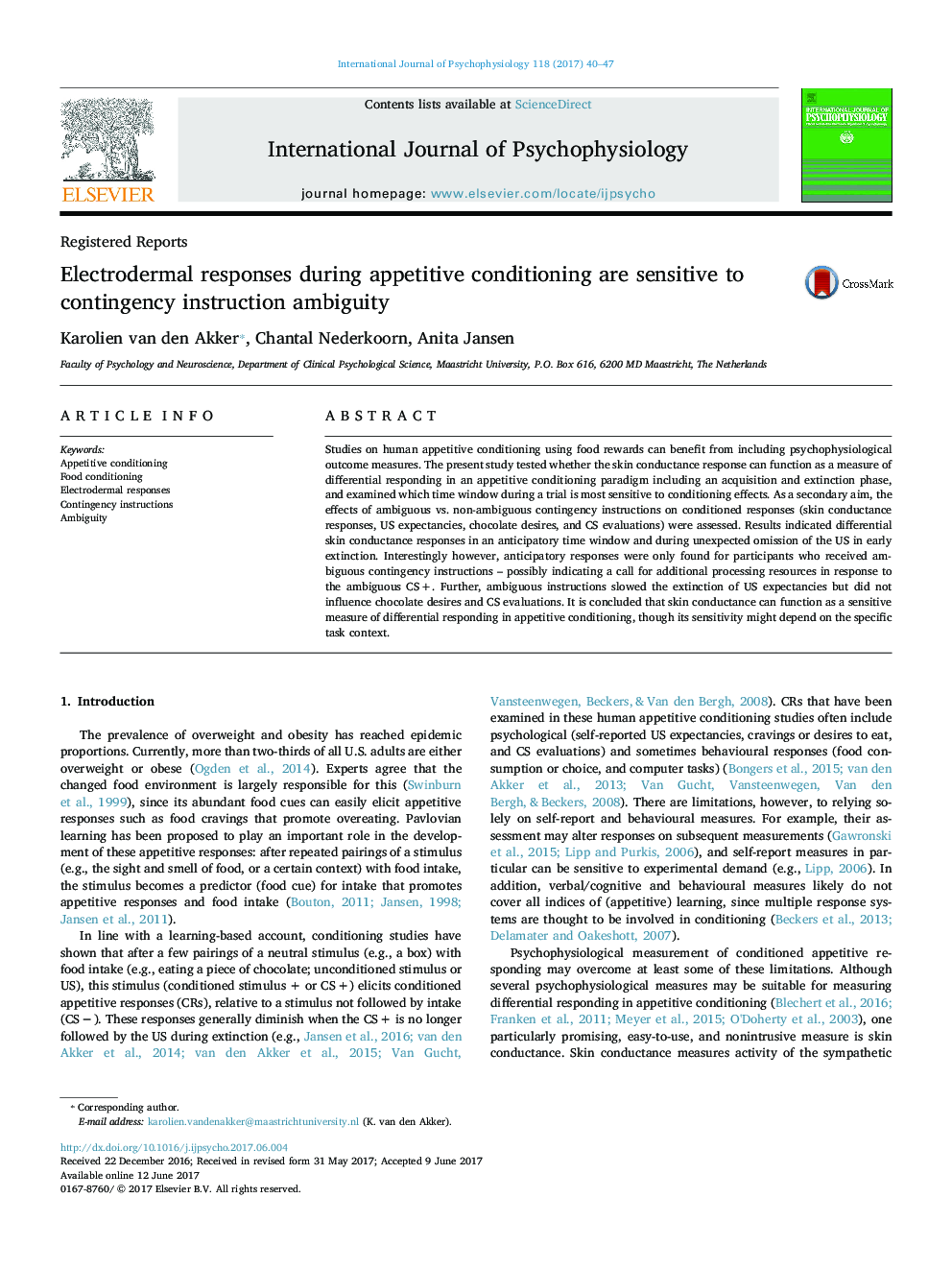| Article ID | Journal | Published Year | Pages | File Type |
|---|---|---|---|---|
| 5042309 | International Journal of Psychophysiology | 2017 | 8 Pages |
â¢We tested if skin conductance is a sensitive measure in appetitive conditioning.â¢Effects of contingency instruction ambiguity were also examined.â¢Results showed an US omission response.â¢Differential anticipatory responses were only found after ambiguous instructions.â¢The sensitivity of the skin conductance response may depend on the task context.
Studies on human appetitive conditioning using food rewards can benefit from including psychophysiological outcome measures. The present study tested whether the skin conductance response can function as a measure of differential responding in an appetitive conditioning paradigm including an acquisition and extinction phase, and examined which time window during a trial is most sensitive to conditioning effects. As a secondary aim, the effects of ambiguous vs. non-ambiguous contingency instructions on conditioned responses (skin conductance responses, US expectancies, chocolate desires, and CS evaluations) were assessed. Results indicated differential skin conductance responses in an anticipatory time window and during unexpected omission of the US in early extinction. Interestingly however, anticipatory responses were only found for participants who received ambiguous contingency instructions - possibly indicating a call for additional processing resources in response to the ambiguous CSÂ +. Further, ambiguous instructions slowed the extinction of US expectancies but did not influence chocolate desires and CS evaluations. It is concluded that skin conductance can function as a sensitive measure of differential responding in appetitive conditioning, though its sensitivity might depend on the specific task context.
